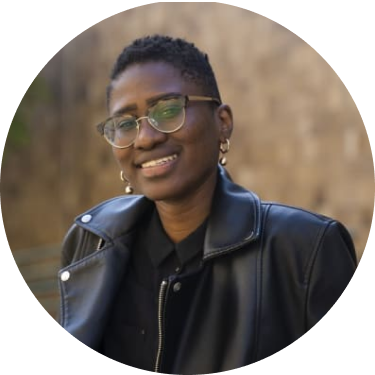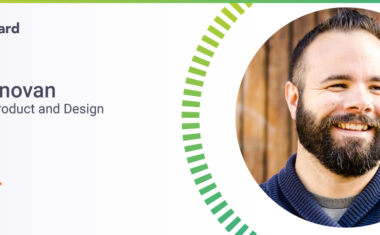Free UX Design Course
Dive into UX design with our free starter course. Transform your creative ideas into user-friendly solutions.
From startups to tech giants, every digital-first company wants to provide an outstanding user experience. Whether they’re designing user-friendly mobile apps, crafting intuitive websites, or developing interfaces, companies crave exceptional user experiences.
In a tech-driven era, companies embracing user-centric design witness a staggering 228% boost in ROI, and you’re about to tap into that success. Curious about the top UX design courses to sculpt your career? We’ve combed through the offerings, presenting you with the nine stellar choices.
Get ready to unleash your potential and ride the wave of career triumph!
Best UX Design Courses
In the following section, we look at some of the best online UX design courses on the market, providing an in-depth review based on key criteria such as skills taught, price, features, and job placement support.
Already know what you’re looking for? Feel free to jump ahead:
| School | Rating | Mentorship? | Job Guarantee? |
|---|---|---|---|
| Springboard | 4.6 | Yes | Yes |
| General Assembly | 4.37 | No | No |
| Interaction Design Foundation | 4.75 | No | No |
| Coursera | 4.61 | No | No |
| Udemy | 4.73 | No | No |
| Superhi | 4.5 | No | No |
| 4.8 | No | No | |
| DesignLab | 4.8 | No | No |
| Career Foundry | 4.7 | Yes | No |
Springboard
Best for Career Prep
Springboard UI/UX Design Bootcamp is a 9-month online course that transforms aspiring designers into competent professionals in the world of user interface and UX.
Throughout the course, you’ll immerse yourself in an engaging, project-based curriculum that’s also beginner friendly. You’ll learn to conduct user research, identify design problems, sketch solutions, create wireframes and high-fidelity mockups, and design prototypes that increase usability and delight users.
One of the defining features of this bootcamp is the unique opportunity to gain hands-on experience with a real startup company during an exclusive 4-week Industry Design Project. You’ll work remotely, dedicating 10 hours per week, taking on a lead role as an expert consultant. This experience allows you to apply your newfound skills in a real-world context and build your collaboration skills with a team of other UI/UX students.
With 1:1 mentorship services, career coaching, and an opportunity to build a job-ready portfolio, this bootcamp prepares students for a successful design career. You’ll be guided by experts who keep you accountable and provide insights from their experience in the industry.
Understanding that self-learning has its limitations, Springboard also provides a human-centric learning environment where students are supported by mentors, career coaches, student advisors, and a community of like-minded individuals. This setup ensures that participants have a support system that keeps them on track and empowers them to achieve their goals.
The bootcamp also has a job guarantee: if you don’t land a job after graduation, you are eligible for a full refund.
PRICE
Upfront: $11,900
Month-to-month cost: $1,540/month
RATING
FEATURES
- 1-1 mentorship with design industry experts
- 100% online and beginner-friendly
- Project-based curriculum
- Exclusive 4-week industry design project working with a real startup
- Dedicated career coaching
- Build an interview-ready portfolio
- Collaboration and networking with a community of fellow students
- UI design courses are also available
JOB GUARANTEE?
Yes
General Assembly
Best For Upskilling
Students go through an immersive journey where they learn essential UX design techniques, explore human-computer interaction, and get hands-on experience with industry-leading platforms such as Sketch and InVision. The curriculum focuses on real-world relevance, ensuring graduates can handle real-life challenges in the user experience design space.
General Assembly’s UX Design Course offers flexibility and places an emphasis on networking. You will become part of an exclusive community, enabling you to form genuine connections with industry practitioners and peers via General Assembly’s global alum network.
Finally, the course is structured to accommodate busy professionals, offering options to learn over ten weeks during evenings or an intensive 1-week accelerated course. To prepare you for the coursework, you’ll be provided with online, self-paced prep lessons covering UX fundamentals.
PRICE
Not publicly available
RATING
FEATURES
- No 1-1 mentorship
- Flexible scheduling options to accommodate working professionals
- Hands-on experience with industry-leading platforms such as Sketch and InVision
- Individualized instructor support
- Real-world portfolio projects
- Pre-course prep lessons for solid foundational knowledge
- In-depth exploration of human-computer interaction
JOB GUARANTEE?
No
Interaction Design Foundation
Best For Practical Learning
Throughout the duration of the course, students have access to templates and step-by-step guides, so that they can apply what they’ve learned in real-world scenarios. Students also participate in a global community, allowing them to connect with peers, share ideas, and seek assistance through an open forum.
After completing the course, participants earn a verifiable and industry-recognized certificate which can be showcased on resumes, CVs, LinkedIn profiles, or websites.
PRICE
Free for Interaction Design Foundation members.
RATING
FEATURES
- No 1-1 mentorship
- Access to templates and step-by-step guides
- No deadlines
- Self-paced learning
- Permanent access to course materials for the duration of the membership
- Earn an industry-recognized certificate
- Optional meet-ups in various cities
- Learning material accessible on any device
JOB GUARANTEE?
No
Coursera
Best For Introductory Learning
The course, led by esteemed instructor Dr. Rosa I. Arriaga, includes six modules structured for beginners, requiring no prior experience in the field. It lasts for 6 hours, spread across three weeks, offering a lot of flexibility to learners.
The curriculum looks at the four-step user interface design cycle: information gathering on user needs, designing and modeling interfaces based on these needs, and evaluating the design to ascertain that the user’s goals are met. Throughout this course, you are exposed to various techniques used in UX design, cultivating skills in usability, user experience, user experience design, and user interface.
PRICE
Free with a Coursera monthly subscription
RATING
FEATURES
- No 1-1 mentorship
- Beginner-level course with no previous experience necessary
- Flexibility with a learn-at-your-own-pace approach
- Focuses on a systematic and data-driven approach
- Shareable certificate upon completion
- Quizzes and assessments to test knowledge
JOB GUARANTEE?
No
Udemy
Best For Students on Budget
The course covers all key UX areas, from user interviews to prototyping and usability testing of responsive designs. It introduces students to a wide range of techniques and tools used in the UX design process, such as persona creation, prototype development, and usability testing for mobile apps.
The coursework also includes planning and conducting field visits, user interviews, and creating user journey maps. It offers step-by-step instructions on designing user interface patterns and running online and offline card sorting sessions.
Throughout the course, you will be guided through five real-world sample projects to improve your portfolio, helping boost your job prospects in UX. These projects range from designing a product for finding lost pets, creating a device for locating supermarket products to developing a gift recommendation system.
PRICE
$79.99
RATING
FEATURES
- No 1-1 mentorship
- Preparation for the BCS Foundation Certificate in User Experience
- Hands-on practice with five real-world projects
- Access to a thriving Facebook community
- Self-paced
- 30-day money-back guarantee
JOB GUARANTEE?
No
Superhi
Best For Short-term Learning
The course provides students with the knowledge to confidently work on diverse UX design projects, covering fundamentals such as user research, wireframing, prototyping, and user interface design. It includes six hours of practical, go-at-your-own-pace video lessons, offering a ton of flexibility in your learning process.
Throughout the course, students are exposed to real-world projects. The only prerequisite is being comfortable using a computer. On completion, you will be confident enough to handle UX design projects for yourself or clients.
PRICE
$149
RATING
FEATURES
- No 1-1 mentorship
- Access to a community via Slack
- Continuous support from expert teachers and educators
- Access to multiple resources for post-course learning
JOB GUARANTEE?
No
Best For Google Job Readiness
The course curriculum is divided into seven modules, where students learn the fundamentals of UX design, including empathizing with users, defining pain points, ideating solutions, creating wireframes and prototypes, testing, and iterating on designs. You’ll delve into the basics of UX research, usability studies, and UX concepts, culminating in the creation of a professional UX portfolio featuring three end-to-end projects: a mobile app, a responsive website, and a cross-platform experience.
PRICE
Free with a Coursera monthly subscription
RATING
FEATURES
- No 1-1 mentorship
- Developed Google employees
- Learning on-demand design tools like Figma and Adobe XD
- Career support
- Connections with 150+ U.S. hiring organizations
JOB GUARANTEE?
No
DesignLab
Best For Part-Time Learners
The UX Academy offers an immersive, project-based curriculum that students can pursue either full-time (40 hours/week for 15 weeks) or part-time (20 hours/week for 30 weeks). The learning journey is divided into phases. Initially, you engage with seven UX/UI Design Essential modules, including lessons, tutorials, and hands-on projects. This phase is enriched with weekly 1:1 mentorship sessions and peer review activities. Then, you move into phases 2 and 3, which focus on career support and portfolio preparation.
By the time you graduate, you’ll own a portfolio featuring three substantial projects showcasing your design process.
PRICE
$7,649 (if you pay with a monthly payment plan) or $7,249 (if you pay upfront)
RATING
FEATURES
- Weekly 1:1 video lectures and calls with an experienced design mentor
- Fully online
- Peer review sessions
- Ongoing support
- Access to a community of alumni, students, and mentors
JOB GUARANTEE?
No
Career Foundry
Best For Guided Learning
Students can study online 30-40 hours/week for five months or 15-20 hours/week for up to 10 months, with a new cohort starting every two weeks. Real-world work experience is also a key component of the course, with partnerships with TechFleet, Democracylab, and Digital Product School giving students the opportunity to gain hands-on apprenticeship training.
PRICE
€6900 (if you pay with a monthly payment plan) or €6555 (if you pay upfront)
RATING
FEATURES
- 1-1 mentorship
- Lifetime curriculum access after graduation
- Specialization online courses
- Real-world work experience through partner apprenticeships
- Flexible schedule
- Career coaching
- Access to industry-standard design tools
JOB GUARANTEE?
No
Get To Know Other Design Students
Anna Peterson
UI/UX Designer at Thumbstopper
Parker Konz
Visual Designer at Gorilla Group
Arin Soukoule
Design Experience Analyst at Accenture Interactive
How We Evaluate Online UX Design Courses and Bootcamps
We reviewed the best UX design courses currently available using a pre-determined list of criteria. We looked at affordability, experience and skills, specialization and area of focus, job placement assistance, and mentorship/human support. The best-ranking UX design courses featured here offer different payment options for students, including scholarships, feature a mix of study options, and offer some kind of job placement or refund-back guarantee. We want to make sure that each UX design course will help you learn the UX design skills you need to impress hiring managers and advance your career in UX design. If you can gain access to a mentor, even better.
Our evaluation process is rigorous, as we want to ensure that these courses balance theoretical UX design knowledge and practical UX design skills, offer good value to students, and have a focused approach toward a specialized domain within UX design. Remember, many industry leaders have started this way!
Here’s a more thorough breakdown of our criteria:
Skills Taught
A well-rounded UX designer should have a blend of technical knowledge, design principles, and soft skills. The courses that we recommend offer a mix of these essential skills. You’ll learn creative skills, new skills involving modern design systems, and more during each intensive online program.
When selecting courses, it is vital to look for those that offer a blend of these essential skills. While theoretical knowledge is necessary, gaining practical experience through hands-on UX projects and exercises is equally essential. Students can apply their knowledge and new skills in real-world scenarios and further develop their skills. It also helps build a UX portfolio of work that can be showcased to potential employers. You’ll also learn project management skills and agile methods that will help you when you start working
Affordability
Cost is a significant factor for many learners, and quality education should be accessible to all. A course’s affordability helps in determining if it provides enough value for its price tag.
When we refer to ‘affordability,’ we aren’t just talking about a low price tag. Instead, it’s about balancing what you pay and what you gain in return. So, when choosing a UX design course, you must consider the monetary cost and what the course offers in return for that investment.
Specialization
Specialization is crucial in the ever-evolving field of UX design. A specialized curriculum allows students to delve deep into a particular aspect of UX design, such as user research, interaction design, user journey mapping, web design, or information architecture.
At Springboard, we rate courses higher if they offer a clear path to specialization. This gives students a solid foundation in UX design and helps them gain in-depth knowledge in an area of their choice, which is invaluable in the design job market.
Job Placement Support
Courses that offer support in building a portfolio, preparing for interviews, and connecting with potential employers greatly help students with their job search after graduation. For example, some courses provide you with mock interviews, give you feedback on your performance, and offer tips and strategies for showcasing your strengths and abilities. Others can provide you with network opportunities, job fairs, and internships.
This support can be instrumental in helping students make the transition from learning to employment.
What’s So Great About UX?
User experience elevates products by weaving functionality with delight. It transforms technology into an enjoyable, seamless interaction. Learning UX is an investment in crafting designs that prioritize user satisfaction, making technology accessible, and resonant with the human experience.
- User experience is about the user. The user is the center of everything in UX design. UX designers consider the user’s needs, wants, and pain points at every stage of the design process. Online UX courses focus on the importance of gaining a complete understanding of user needs in user experience design.
- User experience is about making things easy to use. User experience design strives to create products and services that are intuitive and easy to use. They want users to be able to accomplish their tasks quickly and easily without getting frustrated.
- User experience design is about making things enjoyable to use. UX designers want users to have a positive experience when interacting with their products and services. They focus on creating designs that are visually appealing and emotionally engaging.
- User experience design is a holistic approach. User experience is not just about the design of the user interface (UI). It also includes the user’s journey through the product or service, from the moment they first learn about it to the moment they finish using it.
- User experience design is a data-driven process. UX designers use research data to understand their users and inform their design decisions. They conduct user interviews, usability testing, and other types of research to gather data about user needs, behaviors, and preferences.
- User experience design is iterative. User experience design is an iterative process. UX designers create rapid prototyping of their designs and test them with users to get feedback. They then use the feedback and design thinking to improve the designs before launching them. They design various user flows and study user flow to understand what they need.
- User experience design is important for business success. Businesses that invest in UX design are more likely to succeed. This is because UX design can help businesses to attract new customers, increase customer engagement, and reduce customer churn.
- User experience design is a growing field. User experience design is a growing field with many job opportunities. Businesses of all sizes are looking for UX designers to help them create user-friendly products and services.
- User experience design is a rewarding career. UX designers have the opportunity to make a real impact on the lives of their users. They use their UX knowledge and creative skills to create products and services that make people’s lives easier, more efficient, and more enjoyable.
- UX is a fun and challenging field. UX design is a fun and challenging field that is constantly evolving. UX designers have the opportunity to learn new things and work on innovative projects.
During your professional journey, you’ll work with web design and graphic design professionals, a UI designer, a user research team, and many others as you build your professional portfolio. You’ll also likely participate in exciting design sprints and discussion forums as you create high-fidelity prototypes for clients, making a career in UX design a rewarding one.
Making the Most Out of a UX Design Course
Before enrolling in a user experience design course, you need to ask yourself a few critical questions. Understanding your expectations and the level of commitment while visualizing the outcomes can set you up for success. Here’s what you should know!
What Should You Expect To Learn in a UX Design Course?
A good UX design course will teach you the fundamentals of user-centered design, including research methods, user testing, wireframing, prototyping, and interaction design.
It should teach you about design thinking principles and help you understand how to apply this empathetic approach to solve complex problems. Apart from these technical skills, you should graduate from the course with a strong set of in-demand skills like communication and collaboration.
In general, you want to look for a well-rounded curriculum promoting an understanding of both the aesthetic and functional aspects of UX design.
What Will the Schedule Look Like?
A UX design course schedule can vary significantly based on its type (part-time, full-time, or self-paced) and the depth of the content.
Full-time courses typically demand a higher time commitment, often over the course of several weeks or months with daily classes. On the other hand, part-time courses can last several months but with less frequency, which is ideal for those juggling other responsibilities.
Self-paced online courses offer maximum flexibility, allowing you to learn at your own pace, although these require high self-discipline.
How Can You Implement What You Learn in a UX Design Course?
The beauty of a UX design course lies in its practical application. As you progress through the course, try applying your new design skills to real-world projects, whether professional assignments, personal projects, or even hypothetical ones.
UX design principles can also be applied to other areas of your life, as it’s essentially a problem-solving discipline. Participating in design challenges or contributing to open-source projects can provide opportunities to implement what you’ve learned and grow your portfolio.
What Kind of Job Can You Get After an Online UX Design Course?
Many tech companies, ranging from startups to multinational corporations, seek UX design professionals to enhance their product user experience.
Depending on your interests and strengths, you could work as an entry-level UX designer, interaction designer, or user researcher. You might also consider roles in related fields like user interface design or product management.
You could also freelance or consult, offering your design expertise to a wide range of clients. The exact path will depend on your individual aspirations, foundational skills, and the effort you put into applying what you’ve learned.
FAQs About UX Design Courses
We’ve got the answers to your most frequently asked questions.
Is a Paid UX Course Worth It?
Yes. A paid UX design course can offer substantial value if you seek a learning environment with expert guidance and mentorship. These courses often provide a clear learning path, encompassing all essential elements of UX design, which can be beneficial, especially for beginners.
What’s more, a lot of paid courses also offer certificates upon completion, which enhances your credibility when applying for jobs or freelancing.
Are There Any Prerequisites for Taking a UX Design Course?
Usually, UX design courses don’t demand any prerequisites, as they are designed to start from the basics of user experience.
UX design is a multifaceted discipline combining psychology, business, market research, design, and technology. Thus, individuals from diverse backgrounds often find their unique skills beneficial in this field.
Nonetheless, some background in visual design or a basic understanding of digital tools can be beneficial when enrolling in advanced courses.
How Long Does It Take To Learn UX Design?
The time it takes to learn UX design varies depending on several factors, including the type of course (full-time, part-time, self-paced), your prior experience, and how much time you can commit to learning and practicing.
Generally speaking, a full-time immersive UX design course might last between 8 to 12 weeks, while part-time or self-paced courses could take several months to a year.
Does UX Design Require Coding?
While UX design and coding are distinct skill sets, knowing how to code isn’t a prerequisite for becoming a UX designer. The core of UX design revolves around understanding users and their needs and designing solutions to meet them, which doesn’t inherently involve coding.
Still, having a basic understanding of how coding works can be beneficial. It can help you design more feasible solutions, communicate effectively with developers, and understand the constraints and possibilities of the technology you’re designing for.
Is 40 Too Old To Become a UX Designer?
Age is no barrier when it comes to learning and starting a new career, and this holds true for UX design as well. It’s never too late to become a UX designer.
UX design is a field that values diversity of thought, and your life experiences can provide unique insights and perspectives. If you’re transitioning from a related field, you might find that many of your existing skills—such as problem-solving, critical thinking, or communication—can be valuable in UX design.
Where Can I Get a UX Design Certificate?
You can get a UX design certifcate from the UX Academy, LinkedIn Learning or General Assembly. There are various UX Academy Foundations that offer certification.
What Is the UX Academy?
UX Academy is an online education platform that teaches students the skills they need to become UX designers. The UX Academy program covers a wide range of topics, including UX research, UI design, information architecture, and user testing. Students at the UX Academy also have the opportunity to work on real-world projects with experienced UX designers.
UX Academy is a great option for anyone who is interested in a career in UX design. The program is flexible and affordable, and it can be completed in as little as 12 weeks. Students also have access to a network of experienced UX designers who can provide support and mentorship and help them reach their career goals.
Since you’re here
If you want to work in design, you can. It’s that simple. With our UX Bootcamp, we’ll help you launch your design career in 9 months or less. Browse our free UX salary guide to see what you could be making






